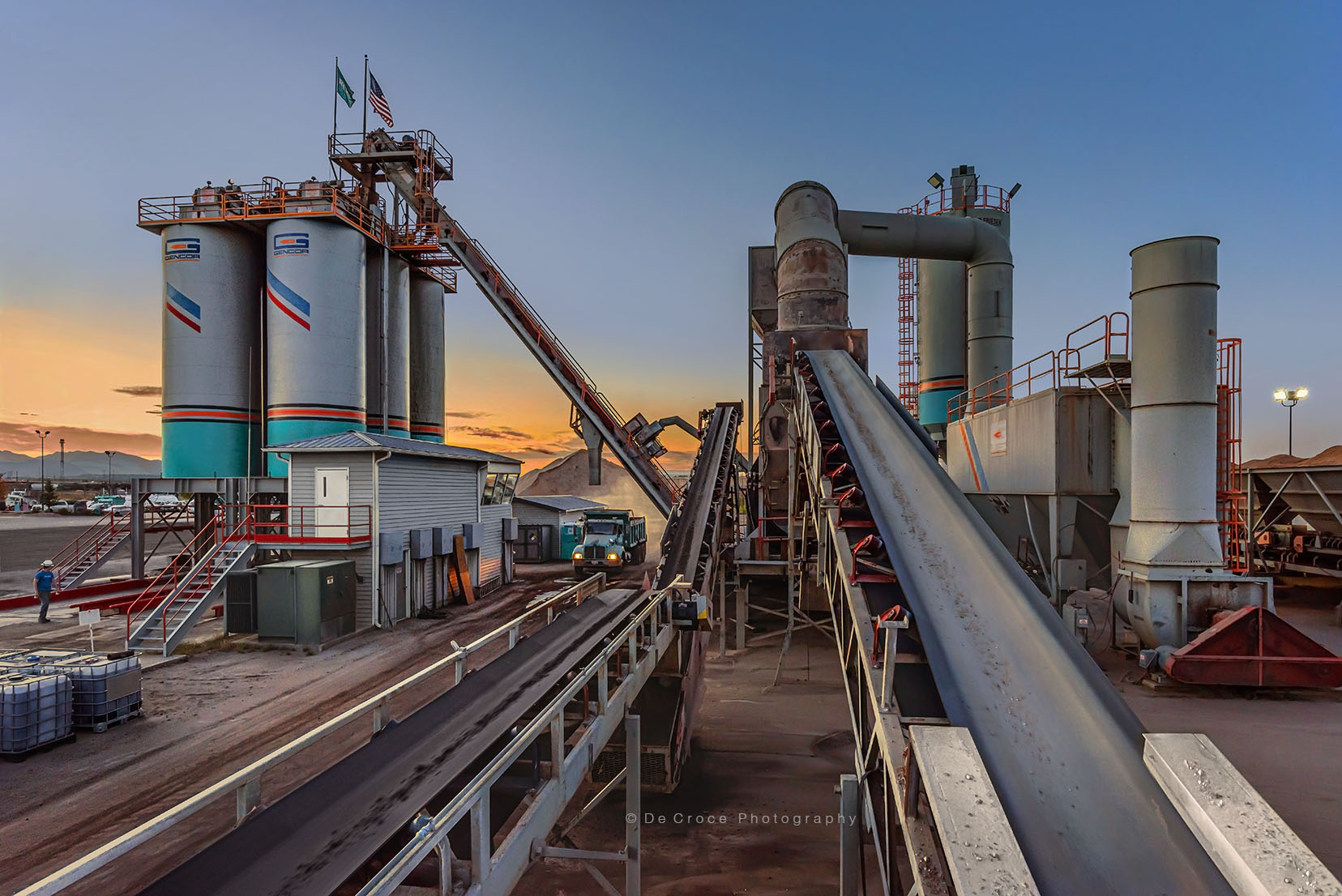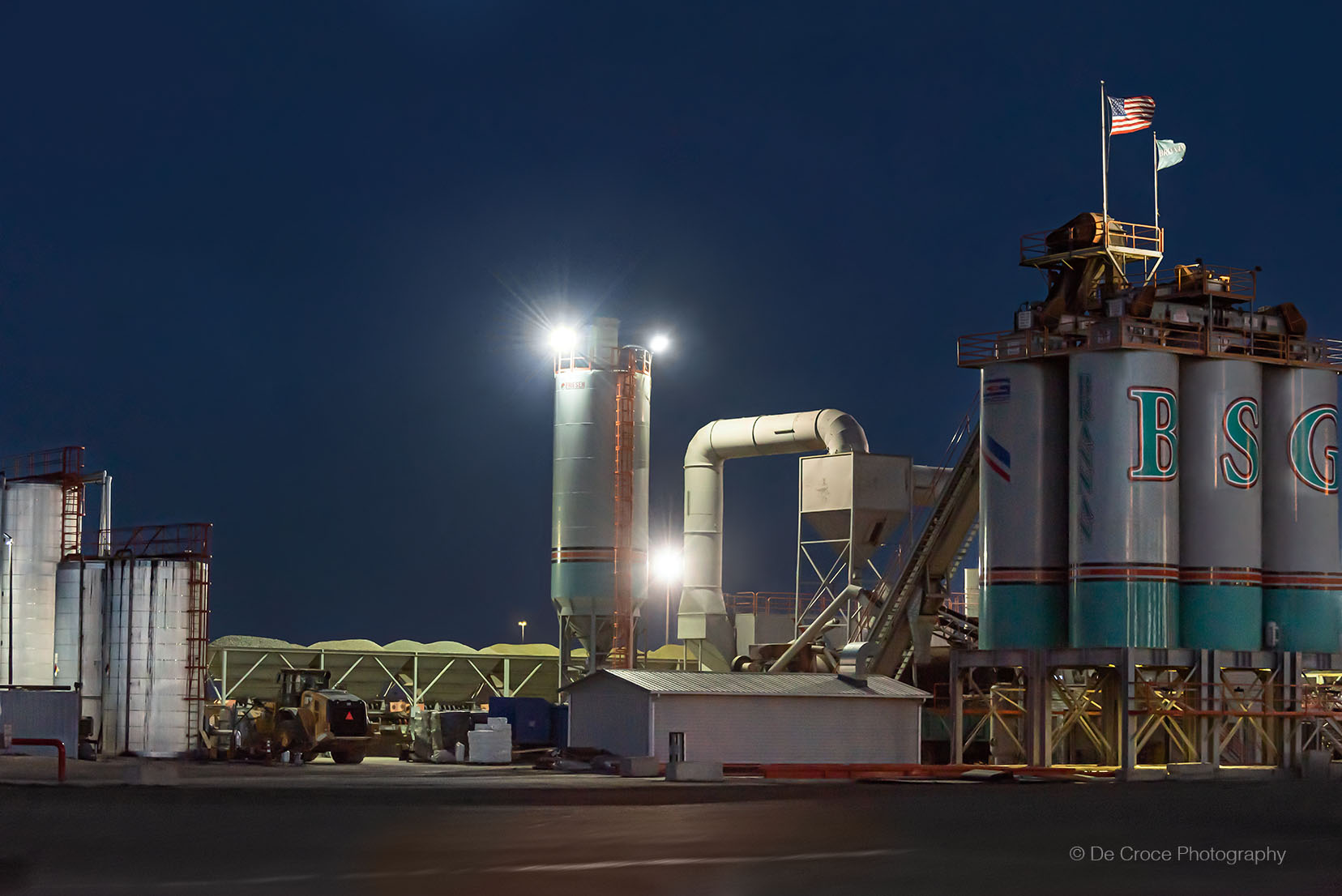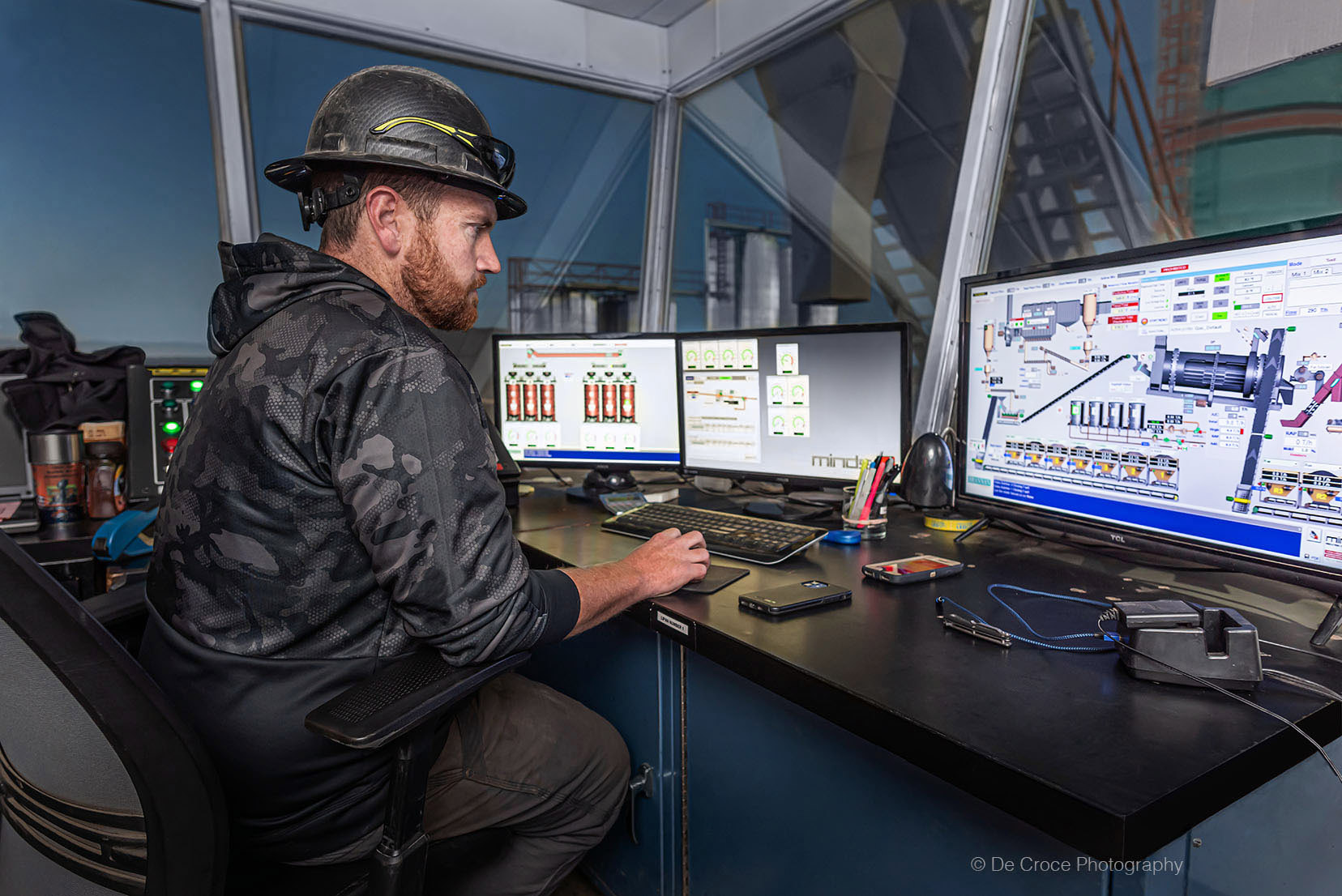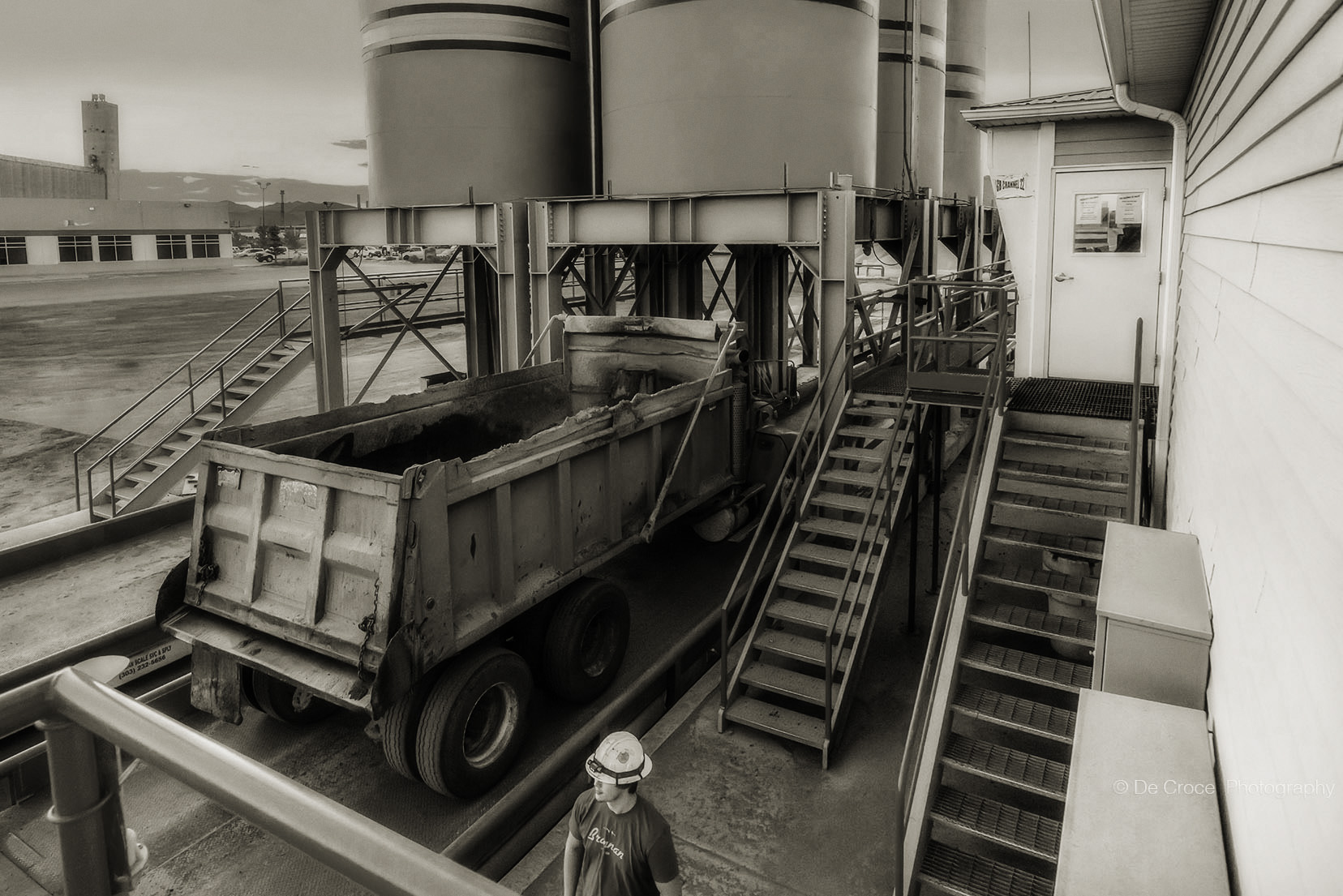Earlier this fall I completed a commercial industrial photography project for Brannan Sand and Gravel Company north of Denver. Here are a few of the results.

It’s odd for me to think of myself as a photographer for industry and commerce. My first love in photography was nature and landscape photography. And my early years were then spent honing my skills as a people photographer and media photojournalist. If an industrial photography gig came my way, I’d simply bid too high to land it. But now, I jump at every chance of an industrial photoshoot.
INDUSTRIAL PHOTOGRAPHY CALENDAR
Brannan representative, Annie Mann, called to schedule a photoshoot. She wanted spectacular images of the Brannan facilities to be published in a photography calendar. So we worked together on our first photoshoot this autumn. I’ll create more commercial industrial photography for Brannan at various sites around the state with a seasonal theme this winter and next year. They have industrial gravel locations in Fort Lupton and Fairplay Colorado, among others.
Oh, I can already envision a fantastic shot next spring at the Brannan gravel pit near Fairplay –– Antelope prancing through wildflower fields in front of snow covered peaks along the Mosquito Range. Wait, is this what an industrial photographer really shoots? The answer is yes. We shoot quarries, machinery, gravel pits, sand piles and industrial workers. But we also create images that demonstrate environmental coexistence and sustainability.

EVOLUTION OF INDUSTRY
There’s no quick answer to why I like commercial industrial photography. It’s a surprise even to me. Childhood friend, Anne Mckinnon, recently asked me what genre of photography is my favorite. Because I’ve known Anne since first grade, I gave a quick unfiltered answer. “Commercial industrial photography”, I blurted out. Fact is, I savor every photography assignment. Be it advertising photography, business portraits or editorial & media non-profit photography, my goal is always to tell a story with every picture I make. Many of my earlier photography clients were family and couples portraits. And I still enjoy that kind of photography too.
The lure about commercial and industrial photography is complex. Maybe part of it has to do with rekindling childhood memories of summers on my aunt’s Montana ranch. Smells of machine oil mixed with composting Alfalfa condensed under the weight of cattle hooves brings back happy memories. Something about the grit of the industrial world compels me to tell a story that is an odd companion with the environmental activist inside me.

With each industrial photography assignment, I feel as though I’m documenting the shift from cast-iron industry to a new era –– an increasing awareness of the malaise brought on by our over-industrialized planet.
There’s a lot of discourse now about the nature of what a post-industrial society should look like. But that conversation seems premature to me. Didn’t Congress just pass an enormous infrastructure bill? After all, roads and bridges are still made from concrete, steel and asphalt, right?
As much as we’d like to free ourselves of the stench of industry’s ills, it seems the conversation should center on the evolution of industrialism rather than the demise of it. How best to create a mindset of sustainability inside industry is the question. And to be effective, change must be driven from within. EPA regulations set important boundaries. But what I see happening from industrial workers, ownership and management is ever-increasing stewardship of their own impact on our environment and our changing climate.



In his book “Last Best Hope – America in Crisis and Renewal”, George Packer describes the bitter division in American society we so earnestly feel. In his astute analysis, Packer designates four separate Americas: Free America, Smart America, Real America and Just America.
Most Americans probably relate to all four of Packer’s Americas. I do. As a business owner, I see a small glimpse of what Packer calls “Free America” –– the libertarian narrative that unrestricted business drives the economy and should be free to enterprise at will. Reagan’s trickle-down theory is far from my tiny business reality, but capitalism is reliant on entrepreneurialism. I get that part.
Packer’s Smart America is the group in which I most automatically fit. It’s not that Smart America is more intelligent than others, but they might read more varied views than average. Smart America is the tech-savvy, socially mobile group that right-wing media has labeled liberal elites. Smart America is based on meritocracy –– the idea that a person’s worth corresponds to their achievements and accolades.
When describing Real America, Packer claims that former Alaska governor Sarah Palin was ahead of her time. Since her male counterpart was elected president eight years after her run for vice president, Packer makes a strong case. Real America centers on “the idea that the authentic heart of democracy beats hardest in common people who work with their hands”, writes Packer. To a large degree, it is Real America which elected and stands by Trump. As they see it, Real America creates the lifestyle to which we’ve all grown accustomed and so often take for granted.
Just America advocates for the underbelly of society, focusing on racial, gender and income inequities, to name a few. “A more accurate name would be Unjust America” writes Packer. Its aim is to make right past injustices to establish a nation of true equality.

So why do I bring up Packer’s “Last Best Hope” in an article about commercial industrial photography? Well, I just read it and think everyone could benefit from reading it. Free, Smart, Real and Just Americans have more in common with each other than the beliefs and ideologies that separate us. For that matter, humans worldwide are more alike than different. Especially now, in the 21st century.
Throughout history, warring tribes were often bound together, at least temporarily, by a foreign threat. External uncertainty builds internal fortitude. In this case, the enemy intent on subverting us is us –– our past and present selves. It is the reliance on lazy industry that created and perpetuate what we call climate change. Industry itself has been lazy –– considering only profitability. And the consumers of industry (us) have been lazy users. Our unending thirst keeps us wanting more. Our prize for this indifference is catastrophic –– a planet with rising seas and an unrecognizable climate.
A dear friend recently put eloquently into words what we are all feeling. So I close with this, by Carol Bryn:
“We are on the knife’s edge. If nothing is done, the Earth will rage against us with her full fury. What we are seeing now is a gentle nudge by comparison. We as a species may not survive. The Earth, on the other hand, will wash itself clean of our dust and dander and keep on spinning as the viable universal element she is. Our controlling constructs of money and politics are meaningless in the face of our extinction. This is as existential as it gets.“
.
.

Fantastic article, Edward! I am honored to be included. -Carol Bryn